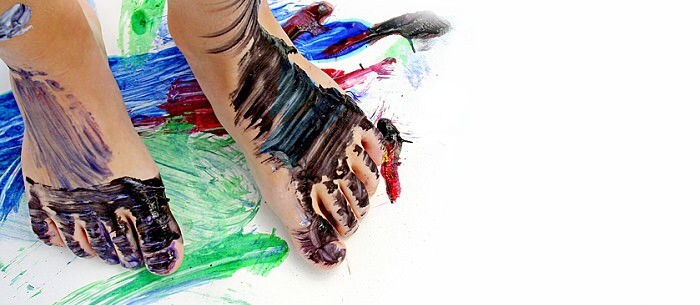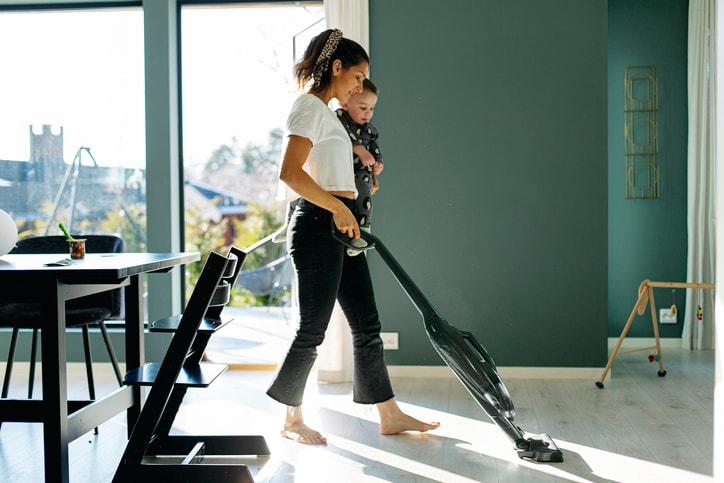Activities for toddlers? Isn’t your toddler active enough? She’s always in motion, walking (even running!) around with her own cute little wobbly gait. But did you know that you can channel all this energy into skill-building fun?
Here are some great ideas that can help you boost your toddler’s development while she plays:
Stomp Your Way to Gross Motor Greatness
Between 1 and 3 years old, your toddler becomes able to walk without your help, carry a toy while toddling, climb up and down on the furniture and maybe even run. Even though she’s working her way toward mastering her physical side, she still needs your help to build her gross (or large) motor skills.
You already know that art activities can build your child’s physical skills, so why not turn an artsy adventure into a full-body game? Go outside, dip your tot’s feet in tempera paint, and let her stamp, stomp and step her way around a piece of butcher paper.
Build a Tower for Fabulous Fine Motor Fun
By now your toddler may be scribbling, building towers with four or more blocks and manipulating containers to get items out — all signs of her developing fine motor control. Anne Zachry, a pediatric occupational therapist and creator of the website Pediatric Occupational Therapy Tips, says, “There are so many fun, developmentally stimulating toys that are wonderful for fine motor development.” She suggests using toys such as building blocks, play dough and nesting containers to boost your child’s small motor mastery. This includes eye-hand coordination and dexterity.
While you can use these playthings in a straightforward way to give your little one’s fingers a major muscle workout, you can also tackle the toys with a twist. For example, combine the building blocks and the play dough. Your toddler can spread the clay over the blocks or scrunch it in between them to build a tower that’s super solid. You can also add a teaspoon of baby oil, a pinch of glitter or some sequins to the dough to add in a tactile sensory experience. Let your toddler explore and experiment, instead of asking her to build something.
Create Some Cognitive Capers
Your toddler is growing more curious by the day. She’s sorting her toys into simple categories, such as colors or shape, and she may start to show you her imaginative streak during pretend play. Activities for toddlers might not delve deep into mental puzzlers, but they do set the stage for further intellectual development.
Zachry notes that young children can use traditionally “fine motor” toys such as nesting containers for pretend play. Instead of stacking the cups inside of each other, set up a dramatic scenario in which the containers magically transform into turtles, trucks or Thanksgiving dinner.
If your toddler gets a kick out of playing house, create a combination pretend play/color-sorting activity. Why pair up all of those teeny tiny socks on your own, when your mini-me can help out and get in some cognitive conditioning? Place a pile of freshly washed and dried colorful socks in front of her. Have her match up the pairs. When she gets one right, clap and name the color.
To learn more about cognitive milestones, check out these 3-year-old developments.
Build Her Social-Emotional Skills
If your toddler is suddenly playing a nonstop game of monkey see, monkey do, it may be the next step in her social-emotional development. According to the U.S. Centers for Disease Control and Prevention, toddlers enjoy imitating other people’s behaviors.
Turn her desire to imitate you into a game. Make a face depicting an emotion, and ask her to follow your lead. Faith Collins, an early childhood educator and creator of Joyful Toddlers!, says, “Rather than labeling emotions, I find that it’s much more useful to point out physical actions or traits that can let the child know what an appropriate action might be.” For example, if you show a sad face, she can give you a hug. If you look happy, she can smile or clap.
When it comes to teaching the all-important turn-taking, Collins suggests using songs. “One tool I like is to use a song to let them know when their turn will end. If we’re baking cookies and every child wants a turn stirring the bowl, I’ll sing ‘All Around the Mulberry Bush,’ and when the verse ends, it’s time to pass it on.”
Want to learn more about your tot’s development? Check out these Milestones in Social Development.
In the past year, your child has gone from barely mobile to a moving machine. Keep the momentum going, and build her growing skill set with activities for toddlers that are creative, colorful and cool!
Erica Loop is a mom, freelance parenting writer and educator with an MS in child development. When she’s not teaching, she’s creating kids’ activities for her blog Mini Monets and Mommies.

